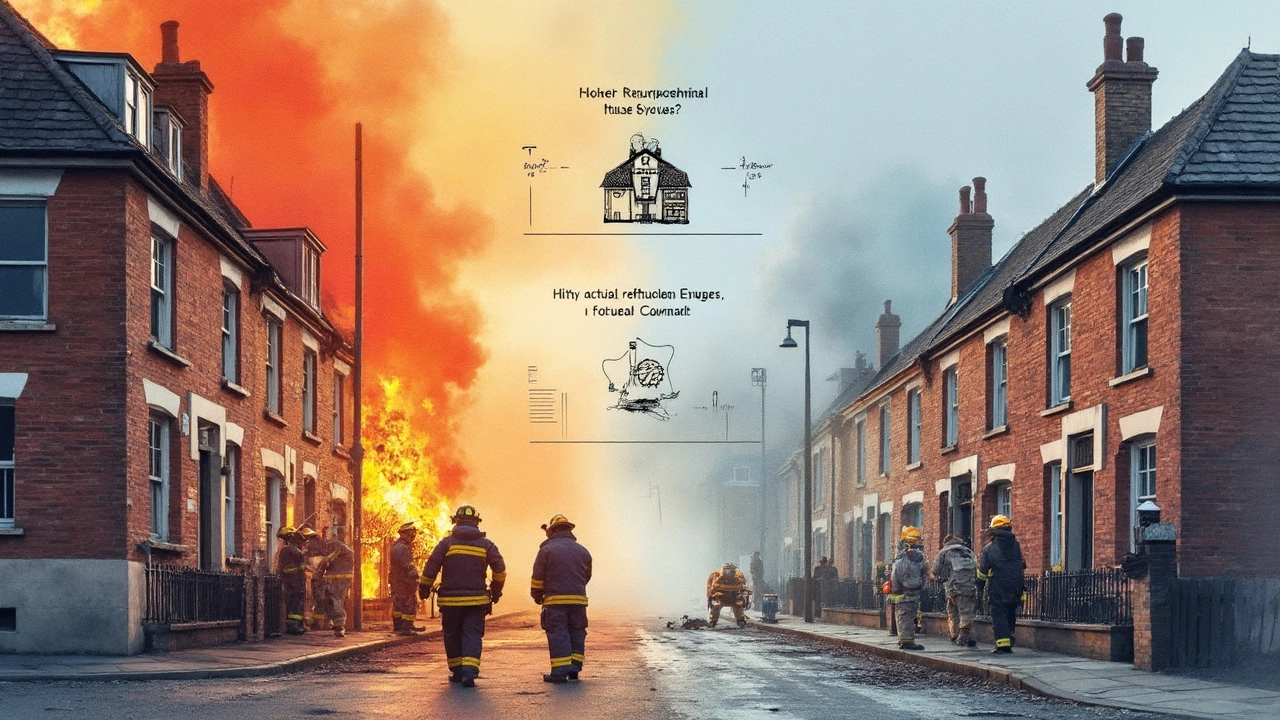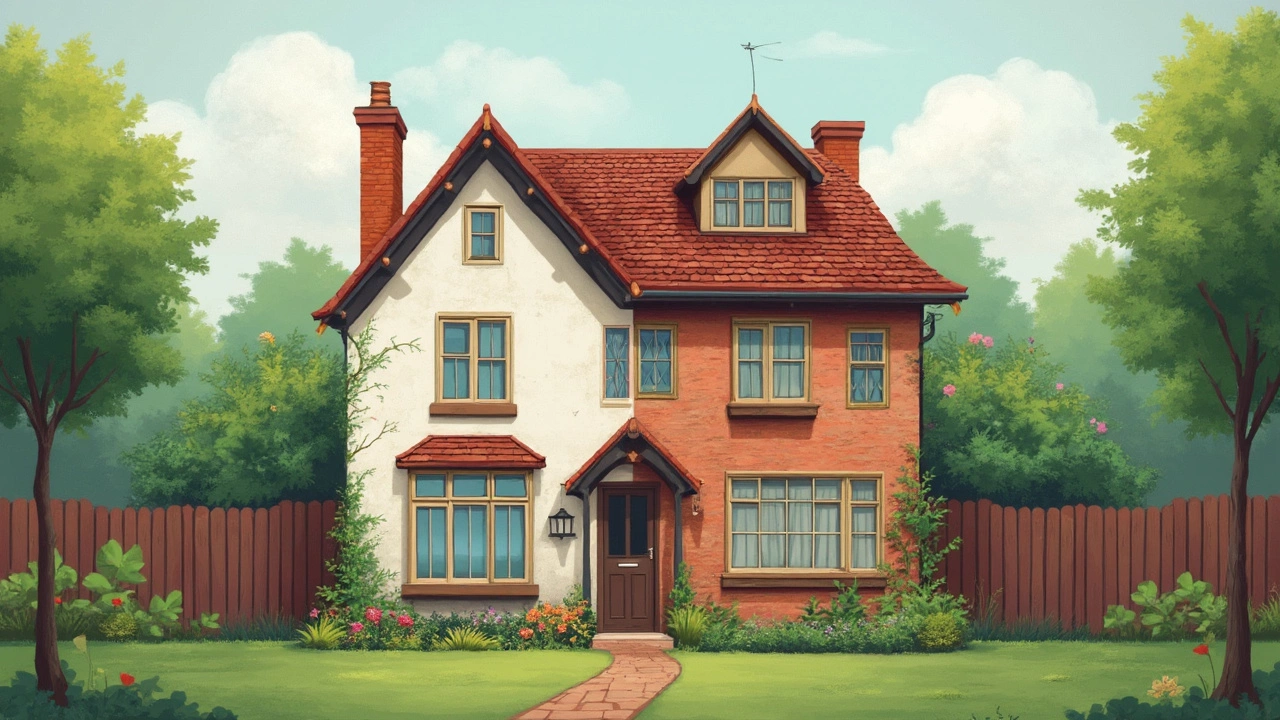If your house burned down tonight, would your insurance pay enough to rebuild it just the way it was? That’s where replacement cost price comes in. Unlike a lot of numbers in insurance, this one actually means what it sounds like: it’s what you’d need to rebuild or repair your home using today’s prices for materials and labor, not what your home was worth when you bought it or after years of wear and tear.
Insurance companies use this replacement cost to figure out what they’ll pay you for a major loss. That’s a big deal because construction costs are always changing, sometimes faster than you’d think. If your coverage is too low, you’re the one stuck paying the difference when it’s time to put your life back together.
- What Replacement Cost Price Means
- Replacement Cost vs. Actual Cash Value
- How Insurers Figure Out Replacement Cost
- Common Mistakes When Choosing Coverage
- Practical Steps to Get the Right Protection
What Replacement Cost Price Means
If you’re looking at home insurance, the term replacement cost price isn’t just fine print. It’s the backbone of what your policy will actually do if something big goes wrong. In plain terms, this is the amount it would cost to fix or rebuild your home with brand new materials, using today’s prices—not what your house or stuff was worth after years of use.
The big thing to remember: replacement cost price ignores depreciation, so you’re not getting shortchanged if your roof is 10 years old. If a tornado takes out your kitchen, replacement cost pays for new cabinets and appliances at current prices, not what the old ones were "worth." That makes a huge difference after disasters—lumber and labor costs go up, not down.
Let’s put it in perspective. Here’s how replacement cost lines up against the other common method, actual cash value:
| Feature | Replacement Cost Price | Actual Cash Value |
|---|---|---|
| Ignores depreciation? | Yes | No |
| Covers current rebuild prices? | Yes | No, factors in aging/wear |
| Out-of-pocket gap risks? | Low | High |
Most mortgage lenders today require you to carry a replacement cost price policy, not just actual cash value. That’s because, after a disaster, folks usually find out real fast that what they’d "get" for their old roof or kitchen isn’t anywhere near what it costs to actually buy new materials and labor.
Replacement cost isn’t about what you paid for your house or what it could sell for—it’s about what it would cost to get you back on your feet in today’s market. Stuff like location or school zones doesn’t matter here; it’s just about materials and rebuild costs.
Bottom line? If your insurance covers only what your stuff is worth "used," you’re on the hook for the gap. That’s why understanding replacement cost price is key to making smart home insurance choices.
Replacement Cost vs. Actual Cash Value
The insurance world loves to toss around terms, but replacement cost price and actual cash value are two you can’t afford to mix up. These are basically two totally different ways your insurer might figure out how much you get when something in your home (or your home itself) needs to be replaced.
Replacement cost price means you get paid what it would cost to buy brand-new stuff or to rebuild, even if what you lost was old. So if a fire destroys your 10-year-old kitchen with outdated cabinets and appliances, your policy pays to rebuild it as if it was new today with today’s prices. No age deductions.
Actual cash value, on the other hand, takes age and wear-and-tear into account. The check you’d get covers the current value of your used items or beat-up roof, which can be way less than what you need to actually buy replacements. For example, a roof that cost $12,000 ten years ago could be worth less than half that now because it’s halfway through its lifespan. If your insurance only pays actual cash value, guess who’s paying the difference? That’s right—it’s you.
Here’s a quick side-by-side to see the difference at a glance:
| Feature | Replacement Cost | Actual Cash Value |
|---|---|---|
| Payout covers | Brand-new replacement | Depreciated value |
| Takes item age into account? | No | Yes |
| Out-of-pocket cost risk | Lower | Higher |
| Monthly premium | Usually higher | Usually lower |
If you want coverage that actually pays enough to get your life back to normal, replacement cost price is usually the smarter bet—even though the premiums can be a bit higher. About 75% of homes in the U.S. are underinsured, often because people default to the cheaper option. You really don’t want to learn this lesson the hard way while standing in the rubble of your kitchen.

How Insurers Figure Out Replacement Cost
The way insurance companies nail down your replacement cost price is a bit more technical than just asking, “What did this house cost back in the day?” They look at what it would take to build your place today—down to the nails, windows, and even the kitchen cabinets.
Most insurers use special software with up-to-date pricing for local materials and labor. This stuff pulls info from all over—like your ZIP code, market trends, and even recent disasters in your area that might make building more expensive. They factor in:
- Square footage of your home
- Building materials (brick, stucco, hardwood floors)
- Number of bathrooms, bedrooms, and unique features (think built-in bookshelves or fancy appliances)
- Type and quality of roof
- Special extras—like pools, fireplaces, or energy-efficient upgrades
They’re not just covering the basic structure. Good policies also look at things like debris removal and updated building codes. If your city now wants houses to be more energy efficient, your home insurance needs to cover that extra cost.
Sometimes, they’ll send an inspector to take photos and measurements. Other times, you’ll fill out a questionnaire. Don’t guess here—if you leave out details, your insurance claims payout could be thousands short when you need it most.
Check out how the numbers can change over just a few years. Even a 4% bump in local construction costs can throw off your whole policy. Here’s a real-world example from 2024 construction data:
| Year | Average Cost/Sq. Ft. | Total Cost (2,000 sq. ft.) |
|---|---|---|
| 2022 | $145 | $290,000 |
| 2024 | $156 | $312,000 |
If your policy’s based on the old number, you might be stuck with a $22,000 gap. That’s why it’s smart to revisit your policy and make sure your replacement cost price actually matches the real cost to rebuild—not just what it was a couple years ago.
Common Mistakes When Choosing Coverage
Most people make the same slip-ups when picking their home insurance, and it usually boils down to misunderstanding replacement cost price. One big mistake is confusing replacement cost price with the sale price or the amount owed on your mortgage. The rebuild cost can be higher—especially if building materials or labor have spiked lately.
Another common blunder is relying on the insurance company’s first estimate for coverage. Sure, insurers use software to crunch numbers, but those programs are only as good as the info you give them. If you recently updated your kitchen or finished your basement but didn’t tell your insurer, your coverage probably won’t keep up with what you’ve added.
People also forget that replacement cost price doesn’t include the land value, just the home itself and attached structures. So if you base your coverage on your home’s market value (which includes the land), you’ll be overpaying for insurance and possibly still be underinsured for the real cost to rebuild.
Here are a few slip-ups that trip up homeowners:
- Not adjusting coverage for renovations or major purchases (fancy appliances and additions count!)
- Picking a deductible that’s too low, driving up your premiums for no good reason
- Forgetting about increased costs after big storms or natural disasters in your area—contractors and materials jump in price when everyone needs repairs at once
- Assuming the insurance company automatically updates your replacement cost price every year (they often don’t)
Here’s a quick look at what happens if you get it wrong:
| Mistake | Risk |
|---|---|
| Underestimating rebuild cost | Out of pocket expenses after a claim |
| Using market value instead of rebuild cost | Overpaying for insurance, not enough coverage when rebuilding |
| Forgetting renovations and upgrades | Coverage gap for new features |
| Not reviewing coverage regularly | Being unprepared for rising construction costs |
Being honest and detailed when you share info with your insurer is key. Always double-check that your home insurance covers what it should—especially when prices and your own home keep changing.

Practical Steps to Get the Right Protection
Getting the right replacement cost price coverage isn’t some one-and-done thing. You’ve got to be a little proactive about it—especially since construction and labor costs have shot up more than 40% over the past decade in a lot of areas. Here’s how you can make sure you’re not left short if disaster hits.
- Update Your Policy Annually: Every time you remodel, add a deck, or put in new floors, let your insurance company know. Even small upgrades can bump up your home’s rebuild cost, and most companies won’t automatically update your coverage.
- Review Your Policy’s Limits: Don’t just glance at the number your insurer picked five years ago. Calculate what it would take to rebuild your place using today’s costs. Insurance agents can use tools linked to real construction data, so ask them for a current assessment.
- Check What’s Included: Some home insurance policies base their replacement cost price only on the main structure, not stuff like fences, garages, or sheds. Make sure you’ve got enough coverage to handle all parts of your property, not just the main house.
- Inventory Your Stuff: Walk around your home and jot down what you own—or take photos. This isn’t just for peace of mind; it helps you figure out coverage for your belongings, and you’ll thank yourself if you ever need to file a claim.
- Ask About Guaranteed or Extended Replacement Coverage: Regular replacement cost coverage has a dollar cap. But some insurers offer to pay above that cap (say, 10% to 50% more) if there’s a spike in prices after a major disaster. This can be a lifesaver if your whole block needs rebuilding at the same time.
Here’s a quick look at how some policy features stack up when it comes to replacement cost price:
| Policy Feature | What It Means | Typical Cap |
|---|---|---|
| Standard Replacement Cost | Pays to rebuild based on current costs, up to coverage limit | Coverage limit listed in policy |
| Extended Replacement Cost | Pays 10%-50% above limit if costs spike | 10%-50% above limit |
| Guaranteed Replacement Cost | Pays full rebuilding cost, no matter how high | No set cap |
The last thing you want is to find out your policy only pays for part of your rebuild because materials got more expensive or your additions weren’t covered. Review your policy at least once a year, especially after any big updates or a jump in local construction prices, and keep good records of what you own. That’s how you keep your home insurance actually useful when it’s time to file insurance claims.

